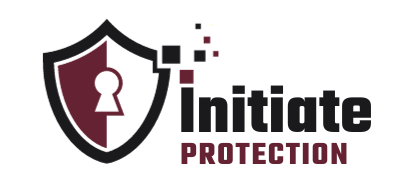In the age of technology and constant connectivity, cybersecurity has become an increasingly pressing concern for individuals and organizations. With the rise of sophisticated cyber threats, it is crucial to understand the basics of cybersecurity and how to protect yourself and your sensitive information. Are you ready to take control of your online security? Let’s dive in.
What is Cybersecurity?
Cybersecurity is the practice of safeguarding computer systems, networks, and data from unauthorized access, theft, or damage. It involves implementing measures, such as firewalls, strong passwords, and software updates, to prevent cyber attacks. In today’s digital landscape, where cyber threats are increasingly sophisticated and widespread, cybersecurity is crucial. It covers a range of areas, including network security, data protection, and incident response. By understanding cybersecurity and implementing effective security measures, individuals and organizations can protect their digital assets and minimize the chances of falling victim to cyber attacks.
Why is Cybersecurity Important?
In today’s digital world, cybersecurity is of utmost importance due to the increasing threat landscape. With cybercriminals constantly seeking to exploit vulnerabilities and steal sensitive data from organizations and individuals, it is crucial to prioritize cybersecurity. This is necessary to prevent financial loss, damage to reputation, and potential legal consequences.
Implementing strong security measures such as robust passwords, regular software updates, and employee training can help mitigate risks. Additionally, investing in advanced cybersecurity technologies like firewalls and encryption can further enhance protection against sophisticated attacks. By giving priority to cybersecurity, individuals and organizations can secure their digital assets and maintain trust with customers and stakeholders. Remember to always stay safe online!
Common Cybersecurity Threats
In today’s digital age, the threat of cyber attacks is a constant concern for individuals and organizations alike. From personal information to sensitive business data, the consequences of a security breach can be devastating. In this section, we will delve into the most common cybersecurity threats that individuals and organizations face on a daily basis. We will explore the dangers of malware, the deceptive tactics of phishing, and the destructive power of ransomware. By understanding these threats, we can better protect ourselves and our sensitive information in the online world.
1. Malware
Malware is a prevalent cybersecurity threat that can cause significant harm to both individuals and businesses. To protect against this threat, it is important to follow these steps:
- Install reputable antivirus software and ensure that it is regularly updated.
- Avoid downloading files or software from unfamiliar or suspicious sources.
- Regularly scan your devices for malware and promptly remove any detected threats.
- Keep your operating system and applications up to date with the latest security patches.
- Exercise caution when clicking on links or opening attachments in emails, especially if they are from unknown senders.
In a notable example of a malware attack, the Stuxnet worm was discovered in 2010. This malicious software targeted Iran’s nuclear program, causing physical damage to centrifuges and highlighting the destructive power of malware.
2. Phishing
Phishing is a common cybersecurity threat that individuals and businesses should be cautious of. To safeguard yourself and your sensitive information, adhere to these steps:
- Be alert for any suspicious emails or messages requesting for personal information.
- Avoid clicking on links or downloading attachments from unfamiliar or dubious sources.
- Verify the authenticity of the sender before disclosing any personal or financial information.
- Ensure your devices and software are up-to-date to defend against known vulnerabilities.
- Enable two-factor authentication for an extra layer of protection.
By following these steps, you can decrease the risk of falling prey to phishing attacks and safeguard your online security.
3. Ransomware
Ransomware is a type of cyber threat that encrypts files and demands a ransom for their release. To protect against ransomware attacks, take the following steps:
- Regularly backup important files to an offline or cloud storage.
- Keep your operating system and software up to date with the latest patches.
- Use a reliable antivirus software that can detect and block ransomware.
- Avoid clicking on suspicious email attachments or links from unknown sources.
- Enable pop-up blockers and use ad blockers to prevent malicious ads.
How to Protect Against Cybersecurity Threats
In today’s digital age, cybersecurity is a crucial aspect of protecting oneself and one’s sensitive information from potential threats. To ensure the safety of our online presence, it is important to take proactive measures against cybersecurity threats. In this section, we will discuss various methods to effectively protect against these threats, including using strong passwords, keeping software and systems updated, utilizing antivirus and firewall software, and being cautious of suspicious emails and links. By implementing these strategies, we can safeguard our digital lives and maintain peace of mind.
1. Use Strong Passwords
Using strong passwords is crucial for protecting your online accounts from cyber threats. Here are some steps to create strong passwords:
- Include a combination of uppercase and lowercase letters.
- Add numbers and special characters.
- Avoid using personal information or common words.
- Make your password at least 12 characters long.
- Use different passwords for each account.
- Consider using a password manager to securely store and generate passwords.
By following these steps, you can significantly enhance the security of your online accounts and reduce the risk of unauthorized access.
2. Keep Software and Systems Updated
Keeping software and systems updated is essential for maintaining cybersecurity and protecting against potential vulnerabilities. To ensure timely security patches, follow these steps:
- Enable automatic updates for operating systems, applications, and antivirus software.
- Regularly check for and manually install updates if automatic updates are not available.
- Remove or update outdated software that is no longer supported by the vendor.
- Implement a patch management system to centrally manage updates across multiple devices and systems.
- Stay informed about security vulnerabilities and updates by subscribing to vendor notifications and security mailing lists.
3. Use Antivirus and Firewall Software
Using antivirus and firewall software is crucial in protecting your devices and data from cyber threats. Follow these steps to ensure the safety of your devices:
- Research: Find reputable antivirus and firewall software that suits your needs.
- Install: Download and install the software on all devices that connect to the internet.
- Update: Regularly update the software to ensure it can detect and defend against new threats.
- Scan: Run regular scans to identify and remove any malware or viruses on your devices.
- Configure: Customize the settings of your antivirus and firewall software to match your security preferences.
By following these steps, you can effectively safeguard your devices and provide an extra layer of protection against cyber threats.
4. Be Cautious of Suspicious Emails and Links
Being cautious of suspicious emails and links is crucial in protecting yourself and your data from cyber threats.
- Verify the sender: Check the email address and ensure it matches the official contact details of the organization.
- Think before clicking: Avoid clicking on links or downloading attachments from unknown or suspicious sources.
- Check for spelling and grammar mistakes: Cybercriminals often make errors in their messages, so be wary of any inconsistencies.
- Hover over links: Before clicking, hover your mouse over the link to see the actual URL. If it looks suspicious, avoid clicking.
- Be cautious of urgent or threatening language: Scammers often use fear or urgency to manipulate people into taking action.
- Keep software updated: Regularly update your operating system, web browsers, and antivirus software to protect against known vulnerabilities.
- Use an email filter: Enable spam filters to reduce the number of malicious emails that make it into your inbox.
Cybersecurity Best Practices for Businesses
As businesses become increasingly reliant on technology, the need for strong cybersecurity practices has never been more crucial. In this section, we will discuss the top best practices for businesses to protect themselves against modern cyber threats. From training employees on cybersecurity awareness to implementing a data backup and recovery plan, we will cover the essential steps that every business should take to safeguard their sensitive information. Additionally, we will also touch on the importance of conducting regular security audits to ensure the effectiveness of these practices.
1. Train Employees on Cybersecurity Awareness
Training employees on cybersecurity awareness is crucial to safeguarding businesses from cyber threats. Here are some steps to effectively educate and prepare employees:
- Begin with an orientation session to inform employees about cybersecurity risks and the significance of their role in protecting company data.
- Provide regular training sessions to keep employees updated on the latest cybersecurity threats and preventive measures.
- Teach employees about password security, including the importance of using strong and unique passwords and not sharing them with others.
- Train employees on identifying phishing emails and suspicious links, emphasizing the importance of not clicking on them or providing personal information.
- Conduct simulated phishing exercises to assess employees’ awareness and provide feedback on areas that require improvement.
Pro-tip: Encourage employees to immediately report any cybersecurity incidents or suspicious activities to the IT department for prompt action.
2. Implement a Data Backup and Recovery Plan
Implementing a data backup and recovery plan is crucial for safeguarding against data loss and maintaining business continuity. Here are the necessary steps to follow:
- Evaluate your data: Identify the critical data that needs to be backed up, such as customer information, financial records, and intellectual property.
- Select a backup method: Choose between cloud-based backups, external hard drives, or a combination of both to ensure redundancy.
- Set up a regular backup schedule: Establish a routine for backing up data, whether it’s daily, weekly, or monthly, depending on the volume and importance of your data.
- Test the backup: Ensure that your backup system is working properly by regularly performing restoration tests to verify data integrity.
- Secure the backups: Implement encryption and access controls to protect backed-up data from unauthorized access.
Pro-tip: Automate your backup process to minimize human error and ensure consistent protection of your data.
3. Conduct Regular Security Audits
Conducting regular security audits is crucial for maintaining a strong cybersecurity posture. Here are the steps to follow:
- Identify the scope: Determine which systems, networks, and data will be included in the audit.
- Establish benchmarks: Set baseline standards for security controls and compare them during the audit.
- Assess vulnerabilities: Identify potential weaknesses in systems and networks that could be exploited.
- Test security controls: Validate the effectiveness of existing security measures, such as firewalls and intrusion detection systems.
- Review access controls: Ensure that only authorized individuals have appropriate access to sensitive data.
- Analyze logs and monitoring data: Investigate any unusual activities or potential security breaches.
- Document findings: Record all audit results, including vulnerabilities and recommendations for improvement.
True story: A multinational company conducted regular security audits and discovered a critical vulnerability in their network infrastructure. By promptly addressing the issue, they prevented a potential data breach and strengthened their overall security measures. Regular security audits are essential for identifying and addressing vulnerabilities before they can be exploited.
The Future of Cybersecurity
As technology continues to advance and evolve, so do the threats to our cybersecurity. In this section, we will take a closer look at the future of cybersecurity and the emerging technologies and threats that we must be aware of. From artificial intelligence to the Internet of Things, we will explore how these innovations can pose potential risks to our personal and professional data. Additionally, we will discuss the crucial role of cybersecurity education in preparing individuals and organizations to protect against these modern threats.
1. Emerging Technologies and Threats
Emerging technologies bring new opportunities, but also bring new cybersecurity threats. To safeguard against these evolving risks, follow these steps:
- Stay informed: Keep up-to-date with the latest cybersecurity trends, technologies, and vulnerabilities.
- Implement multi-factor authentication: Use additional layers of security, such as biometrics or tokens, to verify user identities.
- Encrypt sensitive data: Protect data by utilizing encryption methods, making it unreadable to unauthorized parties.
- Implement AI-driven security solutions: Leverage artificial intelligence to detect and respond to potential threats in real-time.
- Regularly update security systems: Keep all software and security systems updated to ensure they are equipped to handle new threats.
By remaining vigilant and adopting proactive measures, individuals and organizations can better protect themselves against emerging cybersecurity technologies and threats.
2. The Importance of Cybersecurity Education
In today’s digital landscape, cybersecurity education plays a crucial role. It provides individuals with the necessary knowledge and skills to protect themselves and their organizations from cyber threats. With the increasing frequency and complexity of cyber attacks, understanding the significance of cybersecurity education is essential. It empowers individuals to recognize and mitigate risks, promotes a culture of security awareness, and aids in building a resilient and secure digital ecosystem.
To promote cybersecurity education, organizations should prioritize investing in training programs, workshops, and certifications. By establishing a strong foundation in cybersecurity education, individuals and businesses can stay ahead of evolving threats and safeguard their digital assets.
Frequently Asked Questions
What is cybersecurity and why is it important?
Cybersecurity refers to the practice of protecting computer systems, networks, and data from digital attacks and unauthorized access. In today’s digital age, cybersecurity is crucial in order to safeguard sensitive information and prevent cyber attacks that can lead to financial loss, data breaches, and other harmful consequences.
What are some common modern threats to cybersecurity?
Some common modern threats to cybersecurity include phishing scams, ransomware attacks, malware, and social engineering tactics. These threats are constantly evolving and becoming increasingly sophisticated, making it essential for individuals and organizations to stay updated on the latest cybersecurity measures.
How can I protect myself against cyber attacks?
There are several steps you can take to protect yourself against cyber attacks. These include regularly updating your software and operating system, using strong and unique passwords, being cautious of suspicious emails and links, and using reputable antivirus software.
What are some important cybersecurity practices for businesses?
For businesses, it is important to have a comprehensive cybersecurity plan in place. This can include conducting regular risk assessments, implementing strong security measures such as firewalls and encryption, providing cybersecurity training to employees, and having a data backup and recovery plan.
How does understanding cybersecurity benefit me?
Understanding cybersecurity not only helps protect you against potential cyber attacks, but it also allows you to be more aware and informed about potential threats. This knowledge can help you make better decisions when it comes to online security and keep your personal and sensitive information safe.
What should I do if I become a victim of a cyber attack?
If you become a victim of a cyber attack, it is important to act quickly. This can include changing your passwords, reporting the attack to the appropriate authorities, and taking steps to prevent future attacks. It is also recommended to seek help from a cybersecurity professional to assess the damage and secure your systems.





